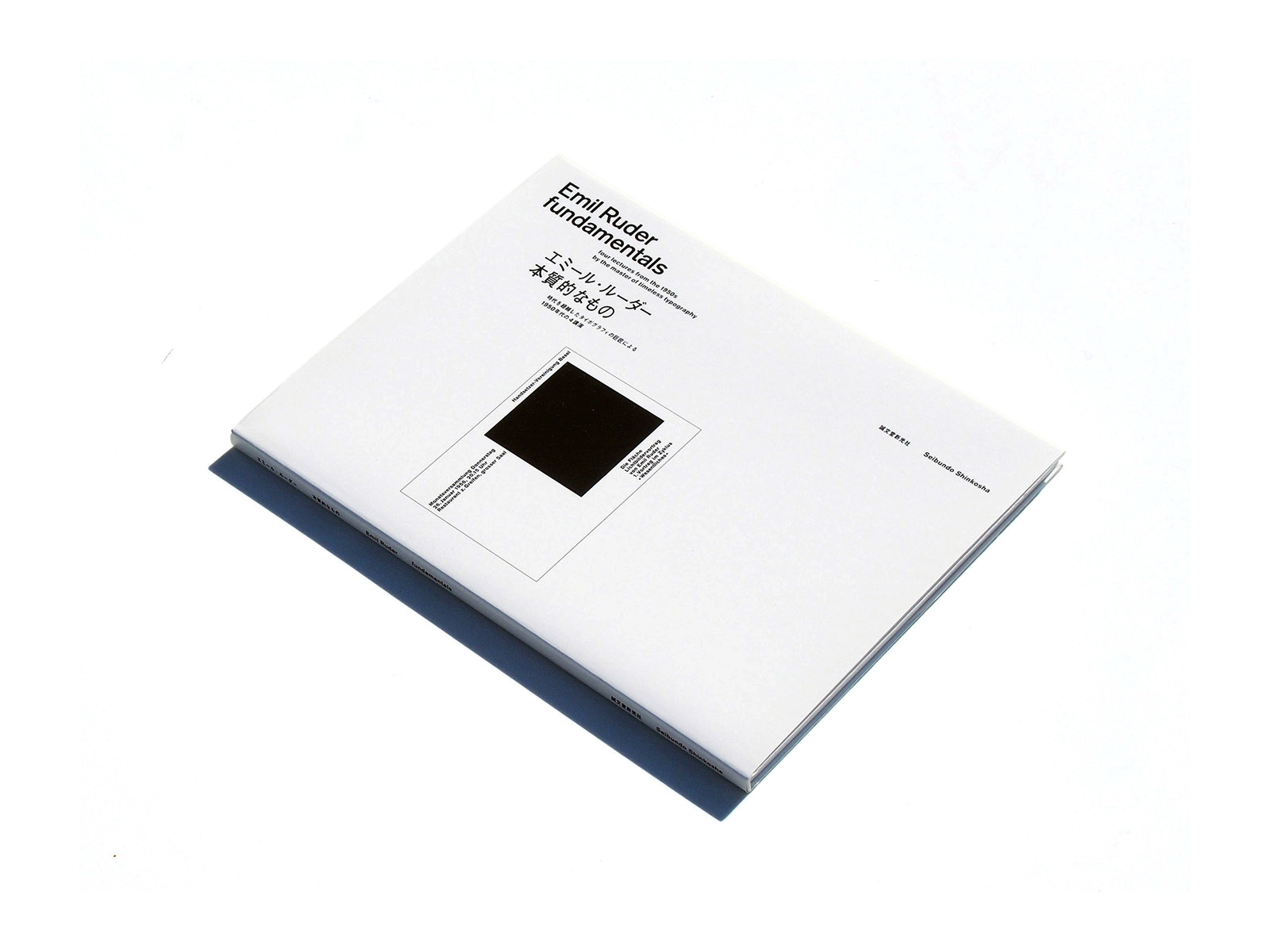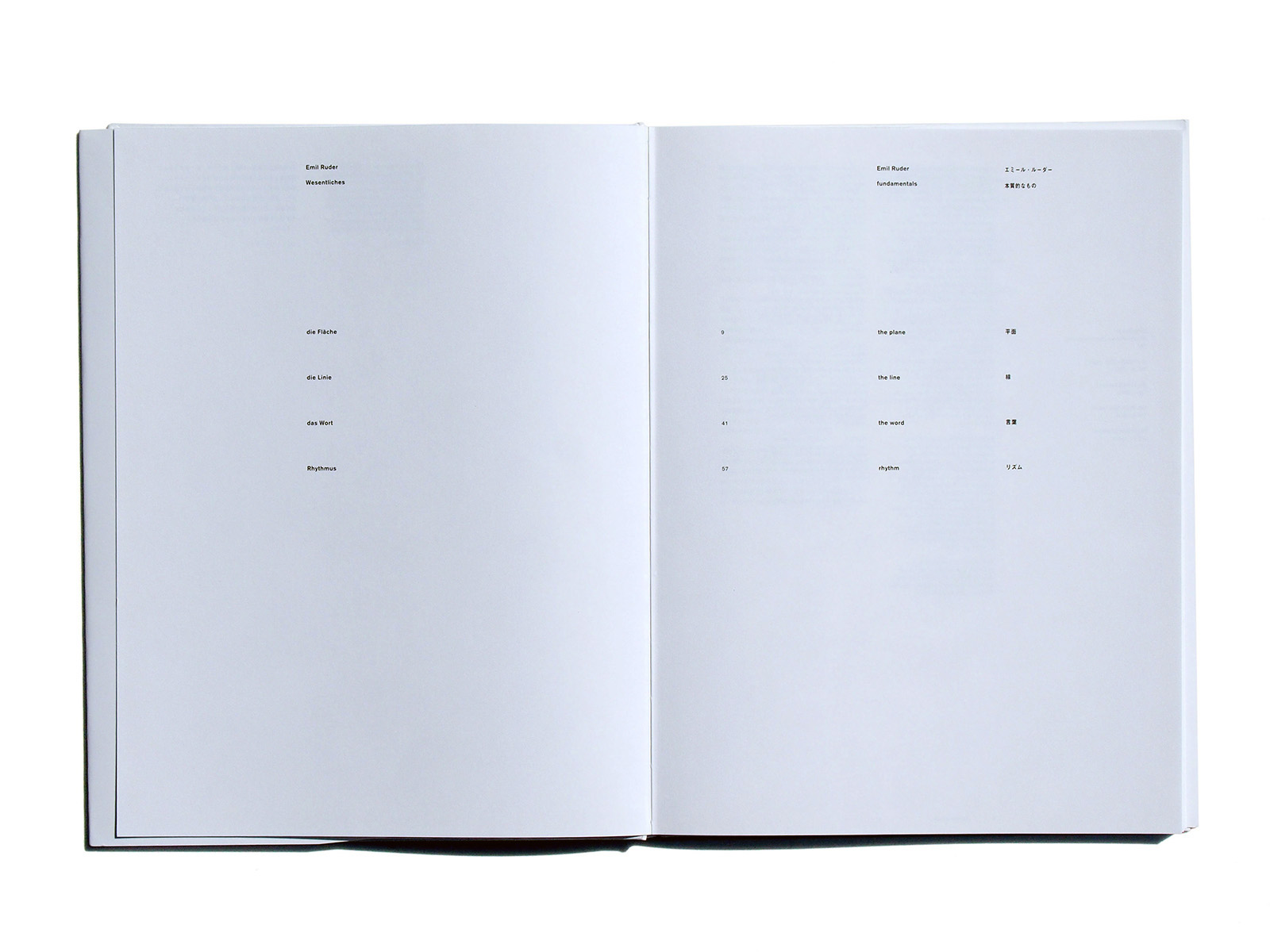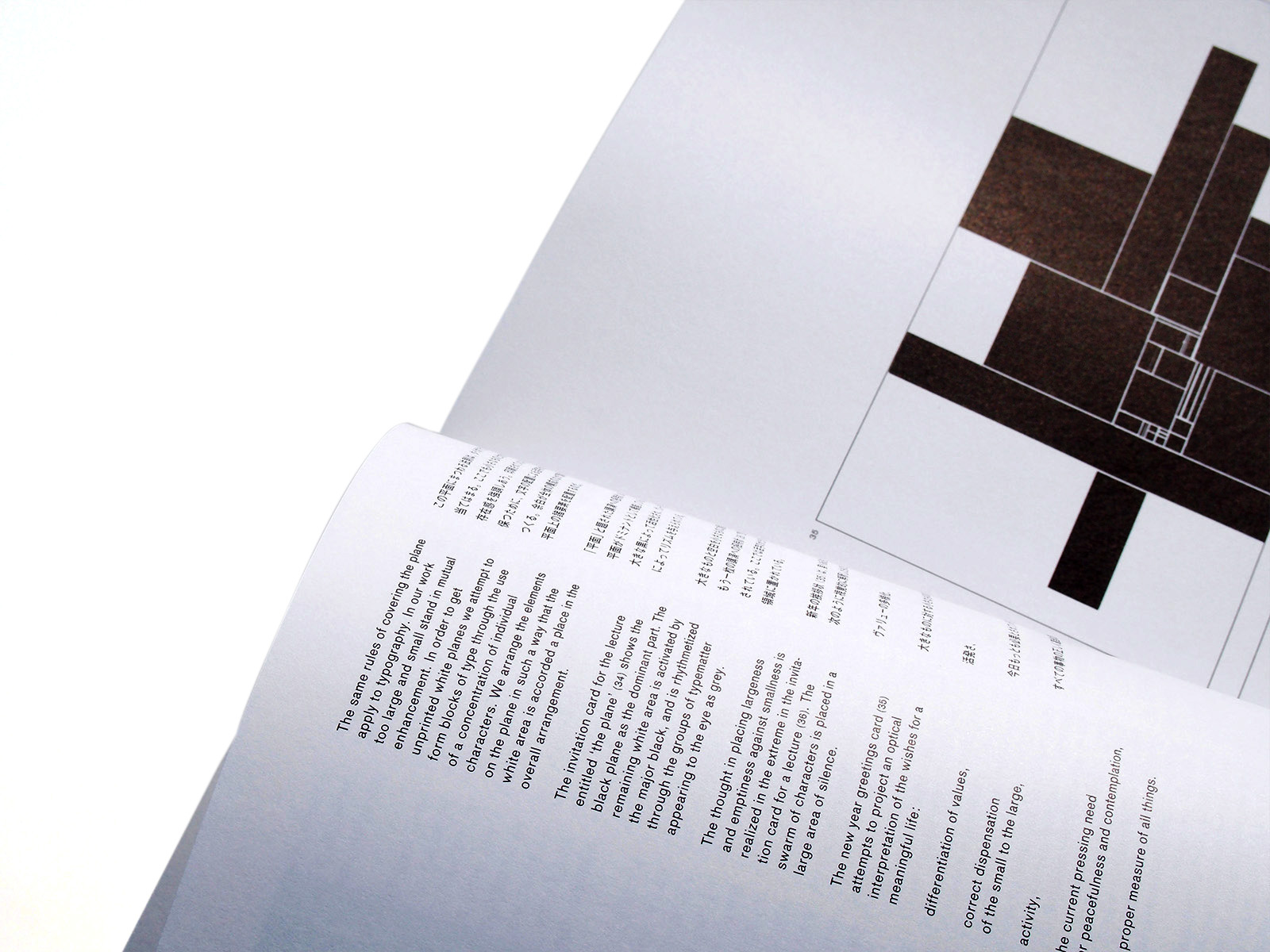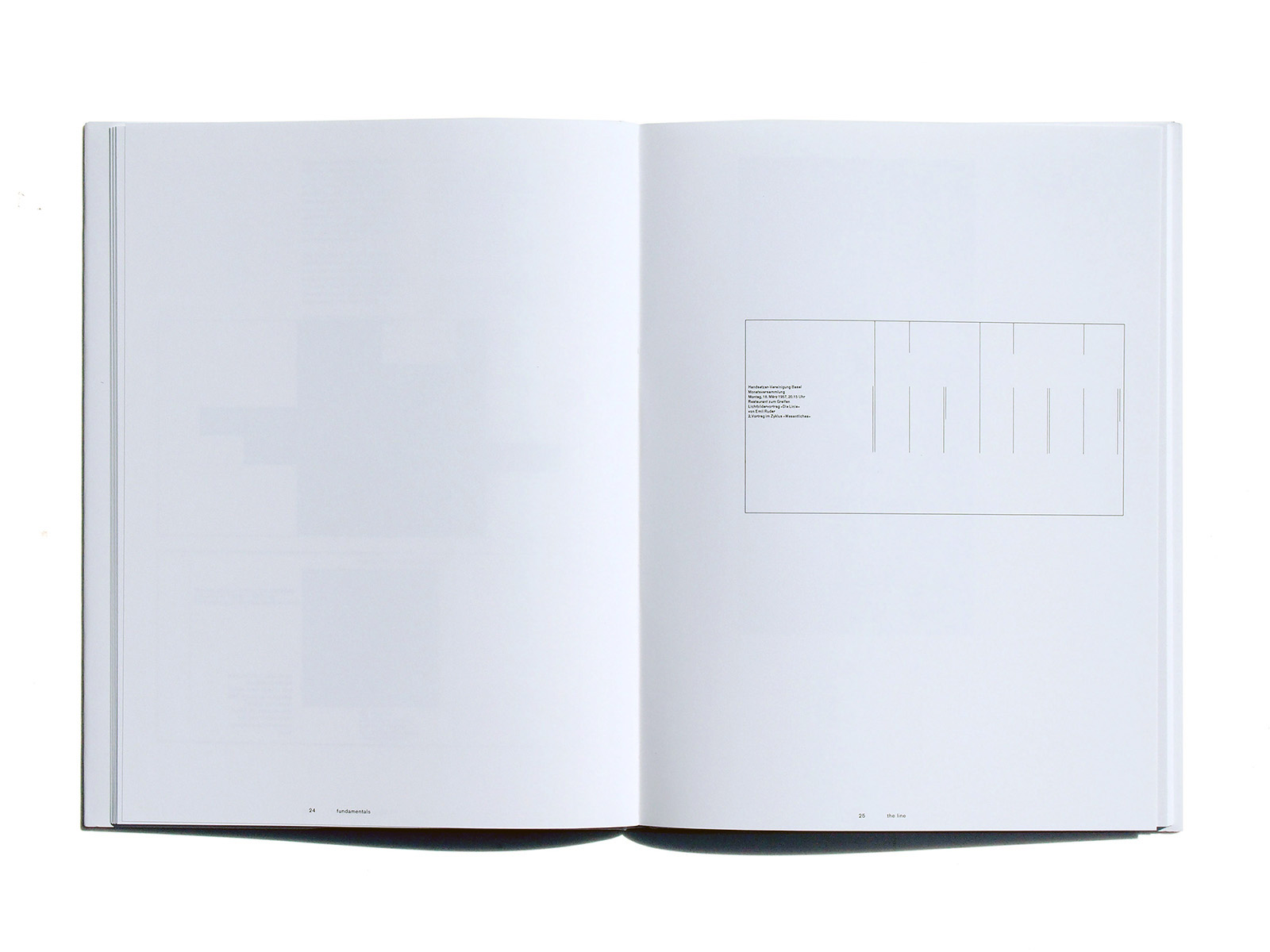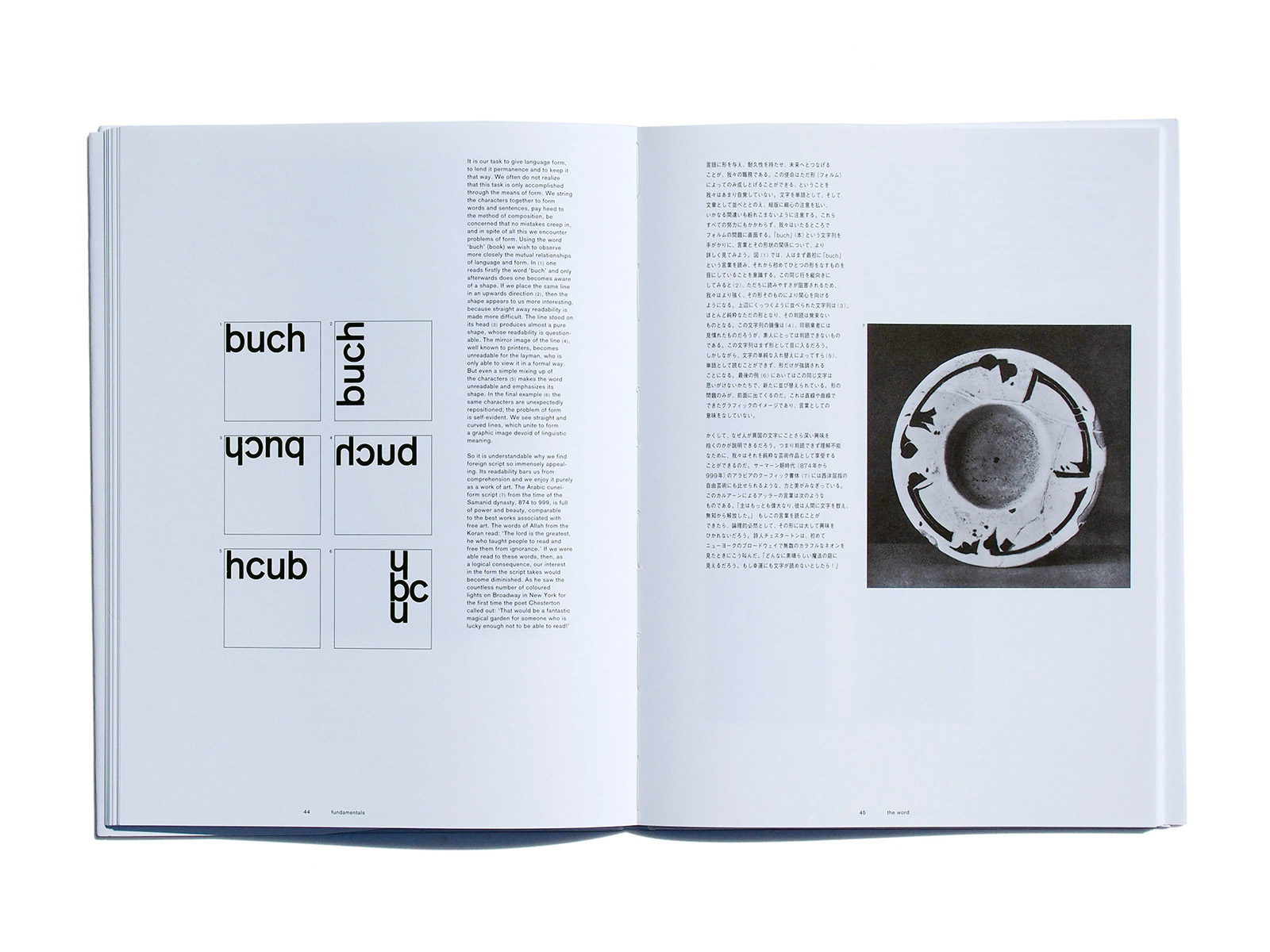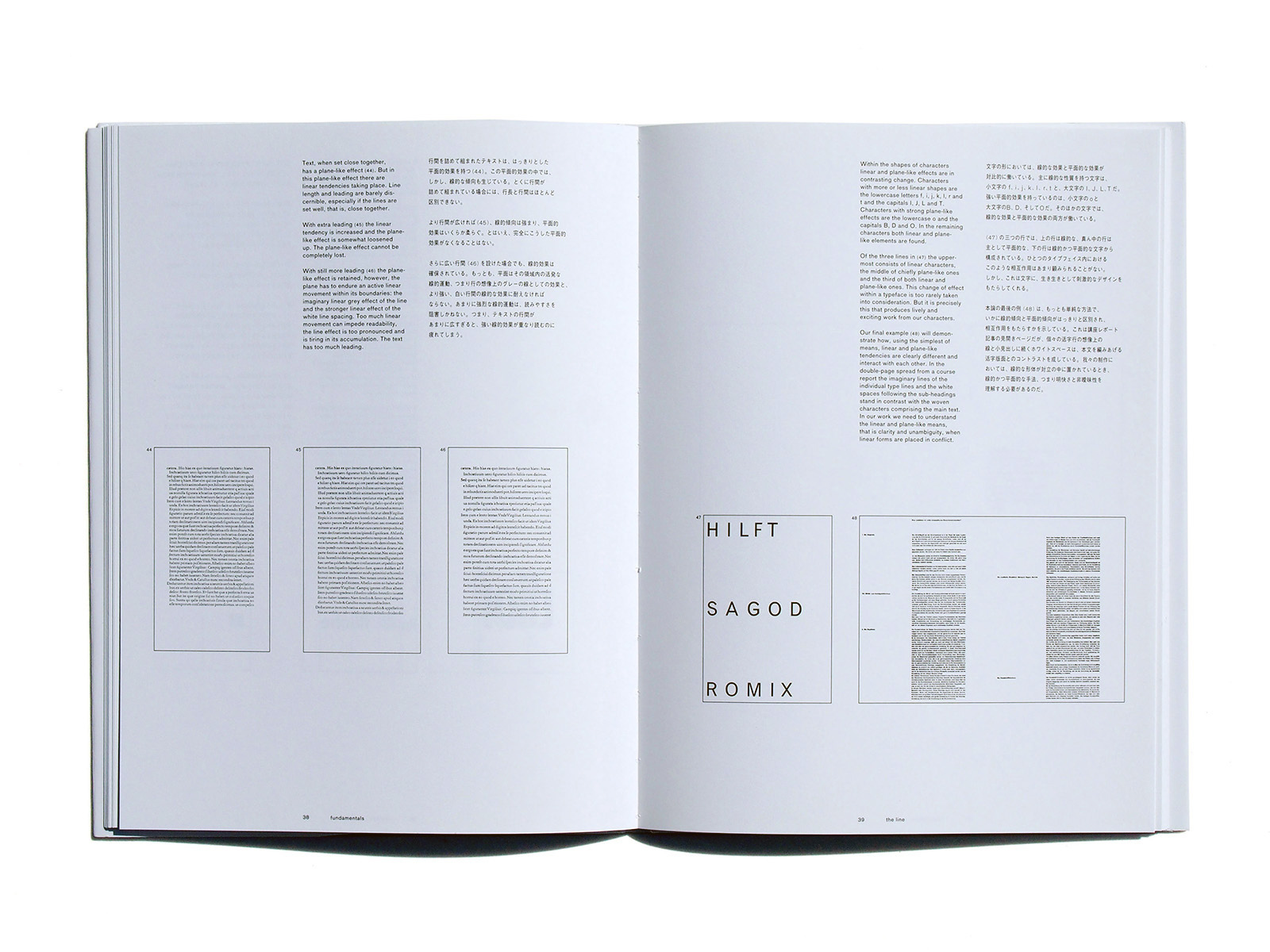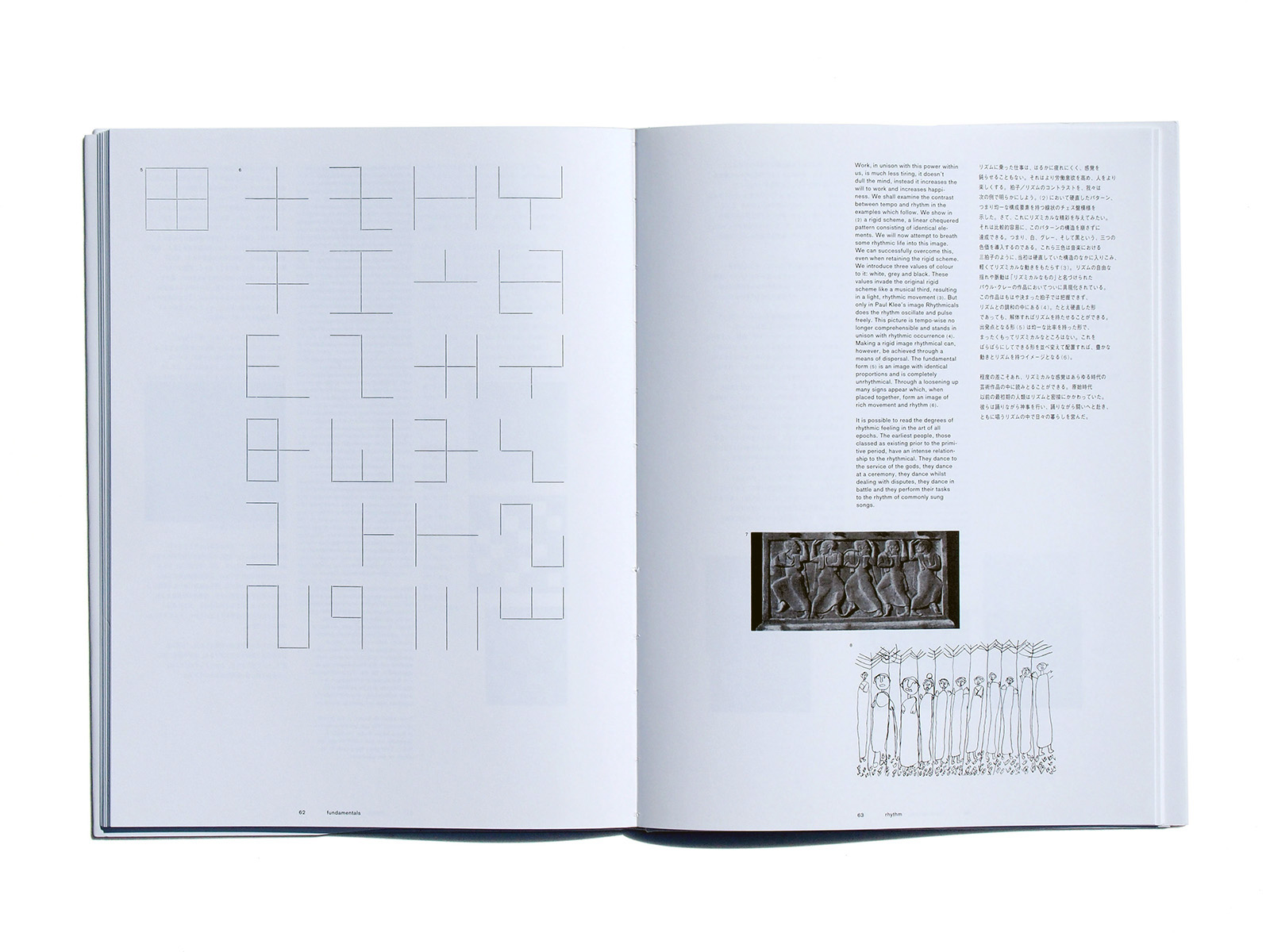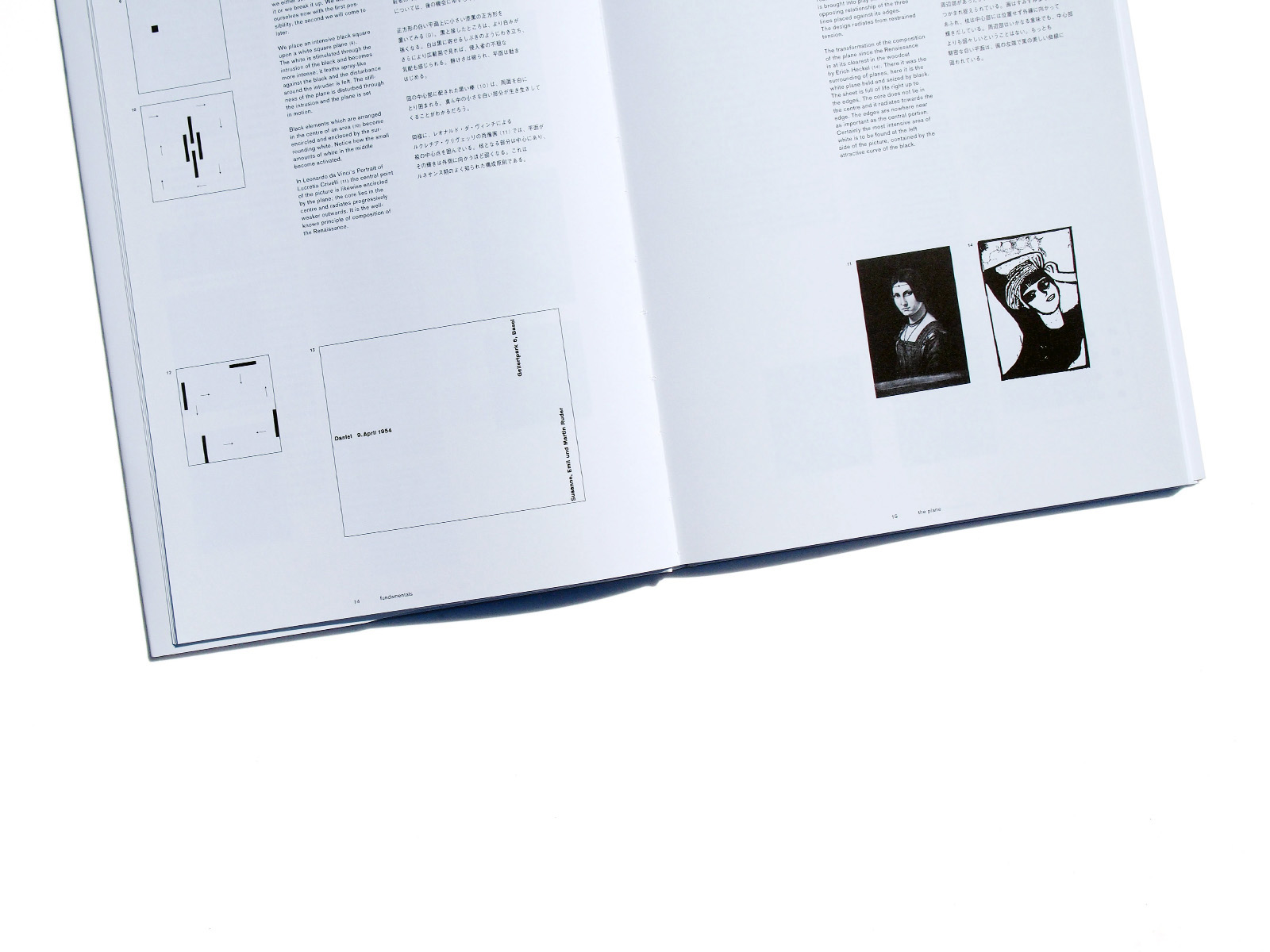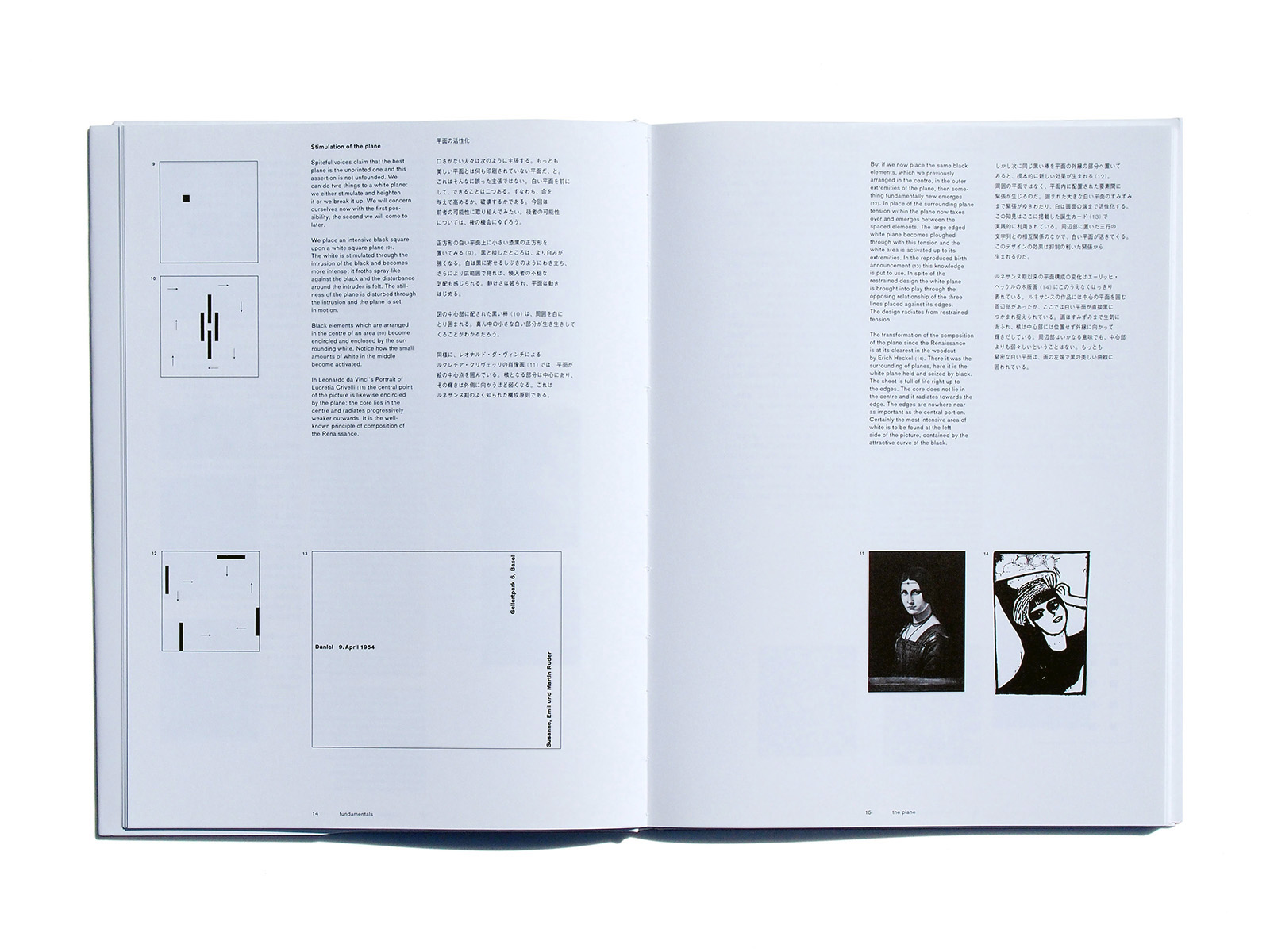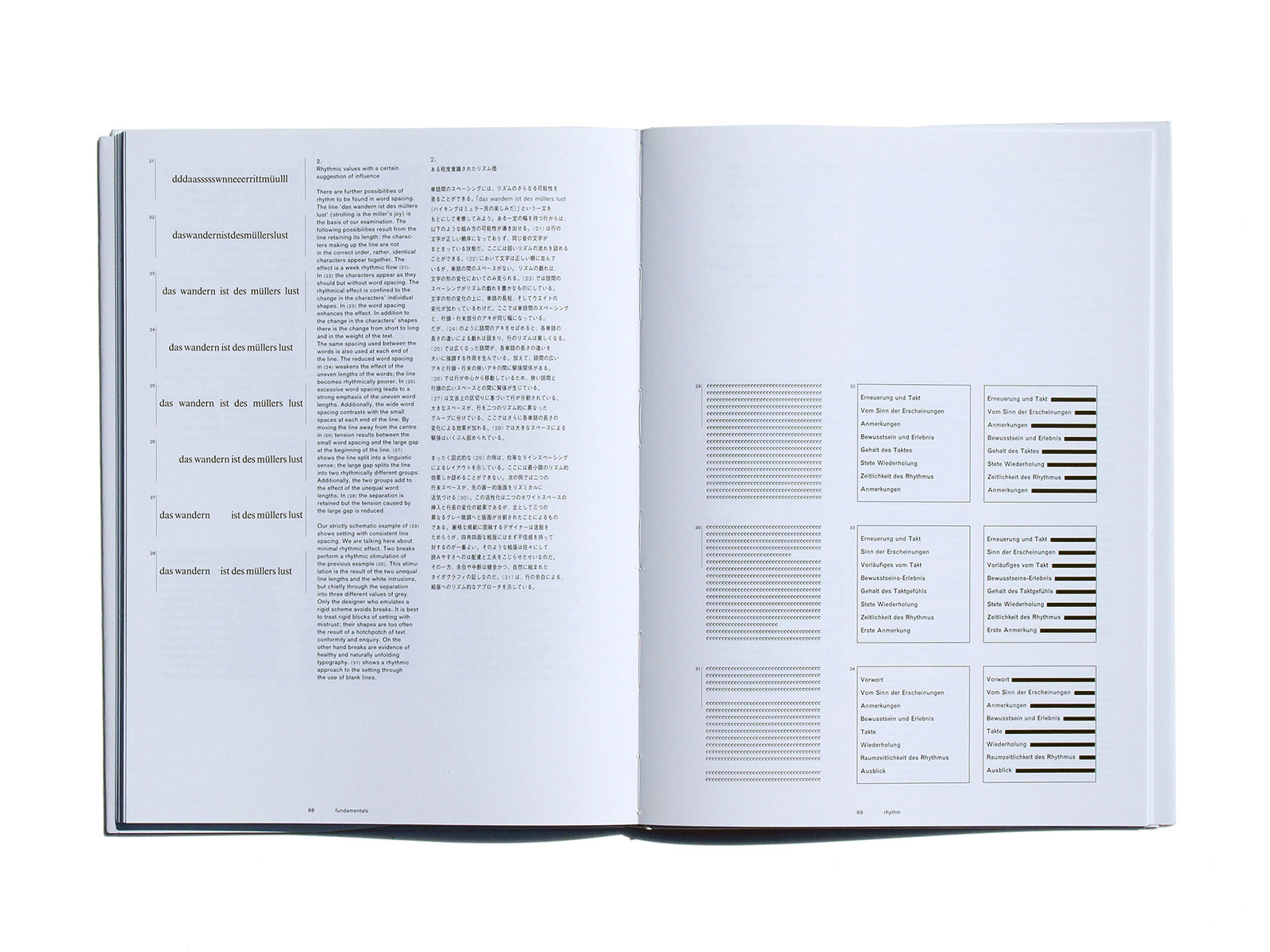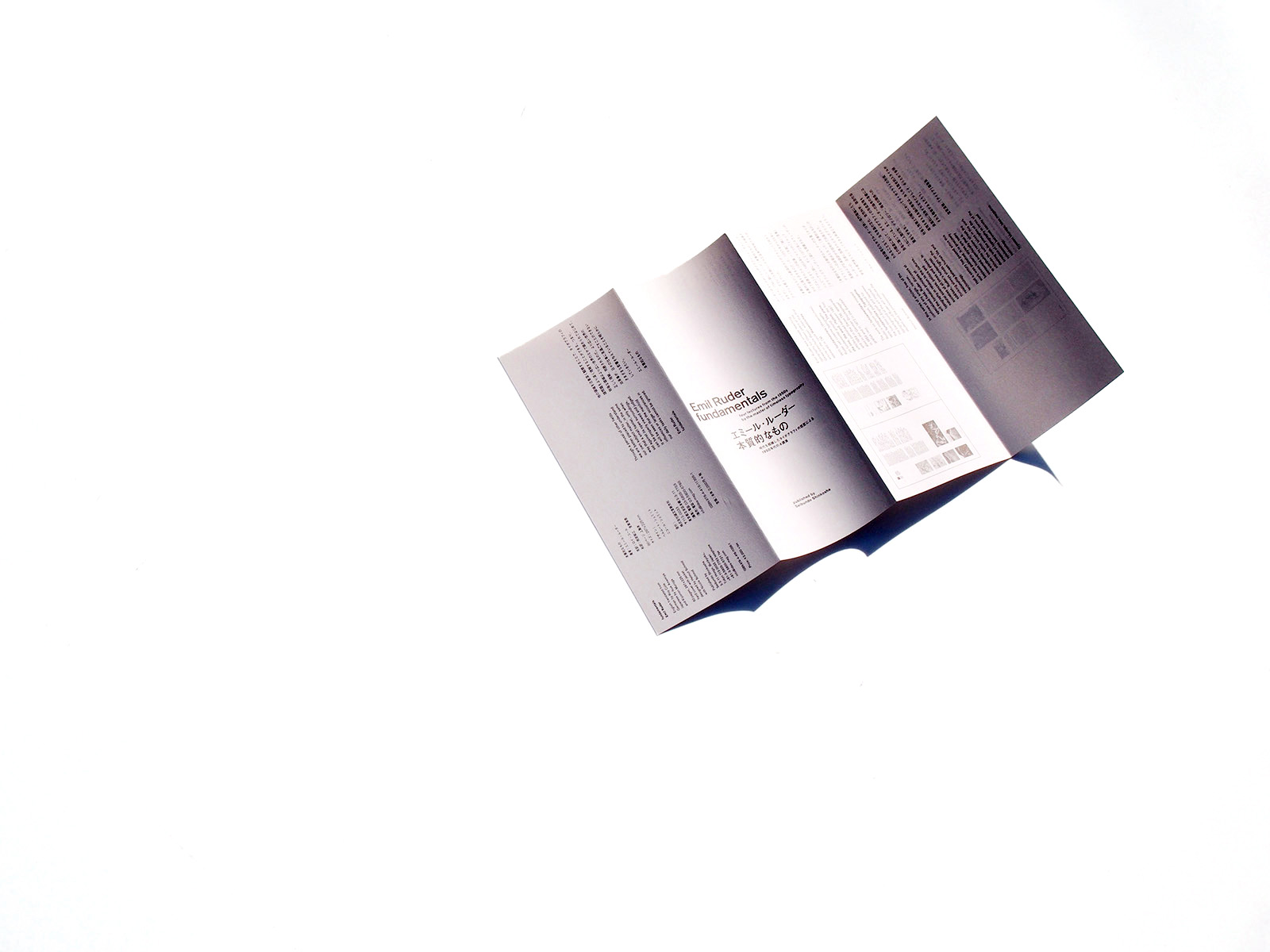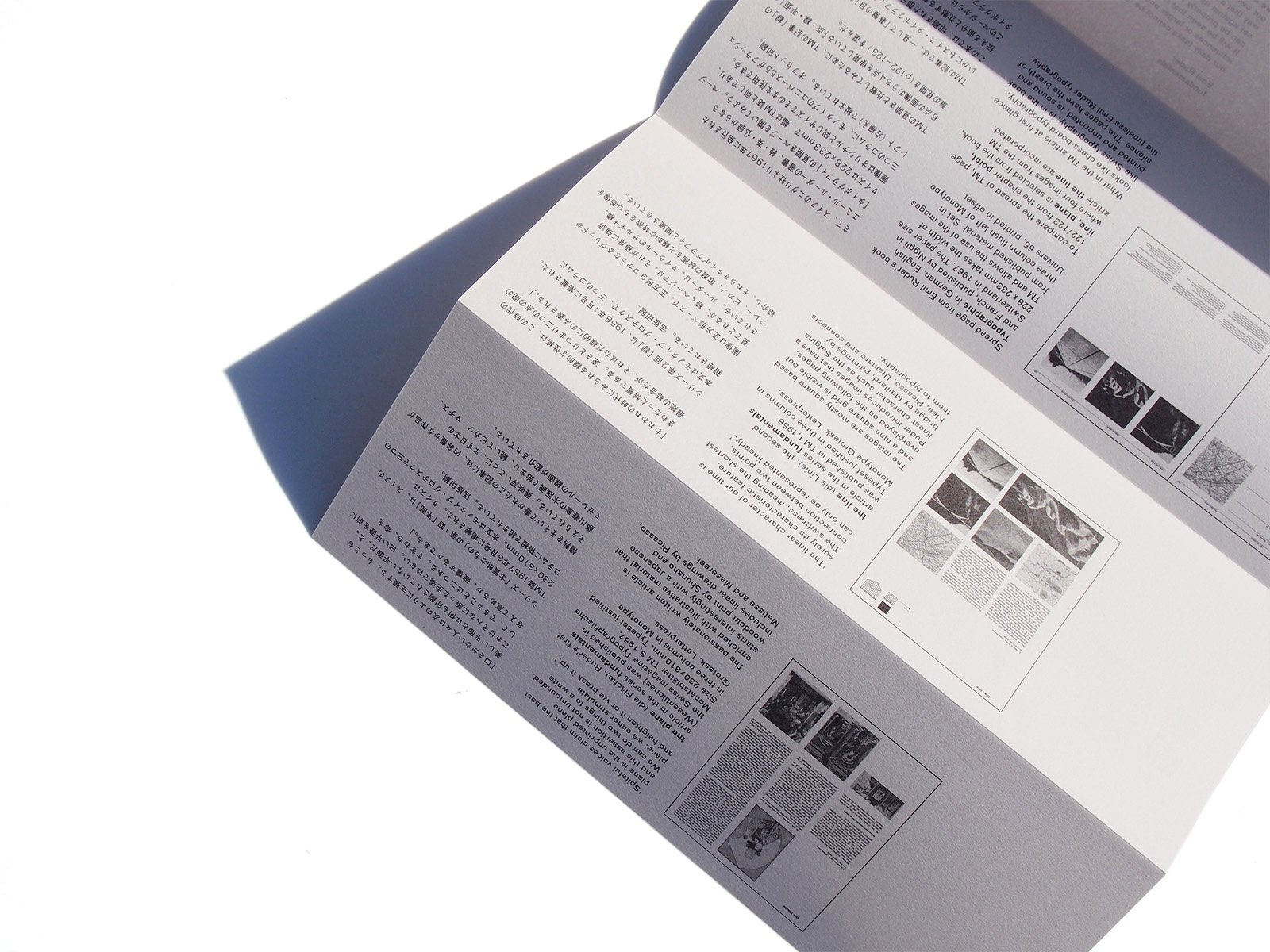Publisher: Seibundoshinkosha
Language: English Japanese
ISBN-10: 4416113560
ISBN-13: 978-4416113561
Product Dimensions: 30 x 23 x 1.2 cm
Release Date: 2013
Price: sold
designed by helmut schmid with nicole schmid.
English translated from German by Roy Cole.
Japanese by Ikue Amemiya and Kiyonori Muroga.
Through a perusal of other fields we are better placed to understand our own subject matter, in the same way that a small hamlet, only when set against its open surroundings, can be properly viewed and judged. It will be seen that the manifold influences or larger occurances in our daily tasks cannot be ignored.
Emil Ruder
fundamentals
Emil Ruder was already teaching typography for fifteen years at the Gewerbeschule Basel, when the first article in the cycle Wesentliches appeared in TM.
With fundamentals (Wesentliches), Ruder set creative typography on fundamental ground. The plane, the line, the word, rhythm, the four articles published between 1957 and 1959 in the Swiss TM, appeared also in the German Druckspiegel in 1959 and in 1972 in the Swedish grafisk revy.
The work on fundamentals initiated Ruder’s magnum opus, Typographie. With fundamentals published for the first time in English and Japanese, the background of the art inspired typography of Ruder will enthuse the student and the professional.
Helmut Schmid
In this series of articles, free of the confines of any single, narrow, specialized field, Ruder discusses at will the formation principles of typography in relation to the cultures,
natural sciences, politics and societies of all times and places. In addition, Ruder’s fundamental thinking always sheds light on the relationship between human life and technology.
Half a century has passed since this work was published. It is precisely because historic styles are today consumed superficially that it is worthwhile to review afresh the attitude the author takes in this work dealing with the principles of the creation of typography in terms of the relationship between society and technology.
Kiyonori Muroga, Idea magazine
スイス・タイポグラフィの巨匠エミール・ルーダー(1914-1970)が雑誌に発表してきたデザイン論「本質的なもの」シリーズの翻訳。「平面」「線」「言葉」「リズム」の各テーマからタイポグラフィと造形の関係を考察する。不朽の論文シリーズ,待望の邦訳。
著者について
1914年生まれ。タイポグラファ,教師。戦後のスイスを舞台にリズムと緊張に満ちた斬新なタイポグラフィで国際的な影響力を発揮した。バーゼル工芸専門学校で行った独創的な教育活動のもと多くの教え子を輩出,後に「バーゼル派」と呼ばれることになるタイポグラフィの流れを形成した。またスイスの印刷専門誌「TM」への寄稿を通じ同時代のタイポグラフファ,デザイナーに強い影響を及ぼした。ルーダーが1967年に著したデザインの教科書『タイポグラフィ』は現代の古典書として,いまなお多くの読者に読み継がれている。
他の領域を注意深く観察することで,タイポグラフィの諸問題をより深く理解することができる。つまり,特殊な領域はより広い世界のなかで眺められてはじめて,正しく理解,判断されるのだ。より広い世界の出来事が,日々の仕事に見過ごすことのできないさまざまな影響を与えていることを明らかにしていきたい。
エミール・ルーダー
本質的なもの
ルーダーはスイスの「ティポグラフィシェ・モナーツブレッテル」(TM)誌にシリーズ「本質的なもの」を発表するまでに,すでに15年間バーゼル工芸専門学校でタイポグラフィを教えていた。
「本質的なもの」は創造的タイポグラフィへと向かう本質的な道を示すものだった。1957年から59年にかけて発表された4つの記事 ── 「平面」「線」「言葉」「リズム」はまた,1959年にドイツの「ドルックシュピーゲル」誌に,そして1972年にスウェーデンの「グラフィスク・レヴィ」誌にも掲載された。
「本質的なもの」の制作はルーダーの大著『タイポグラフィ』への出発点となった。「本質的なもの」の英語および日本語訳が今回初めて出版された。ルーダーの,芸術に鼓舞されたタイポグラフィは学生や専門家たちにとって大きな刺激となるだろう。
ヘルムート・シュミット
一連の論考のなかでルーダーは狭い専門領域にとらわれることなく,古今東西の文化,自然科学,政治社会との関連において,タイポグラフィの形成原理を自在に論じている。また,ルーダーの論考の基礎にはつねに人間の生,テクノロジー,両者の関係への眼差しがある。
社会と技術との関係においてタイポグラフィの形成原理を考える本論の態度は,あらゆる歴史的スタイルが表面的に消費される今だからこそ,あらためて参照される価値があるだろう。
室賀清徳,「アイデア」編集長
idea-mag.comより

